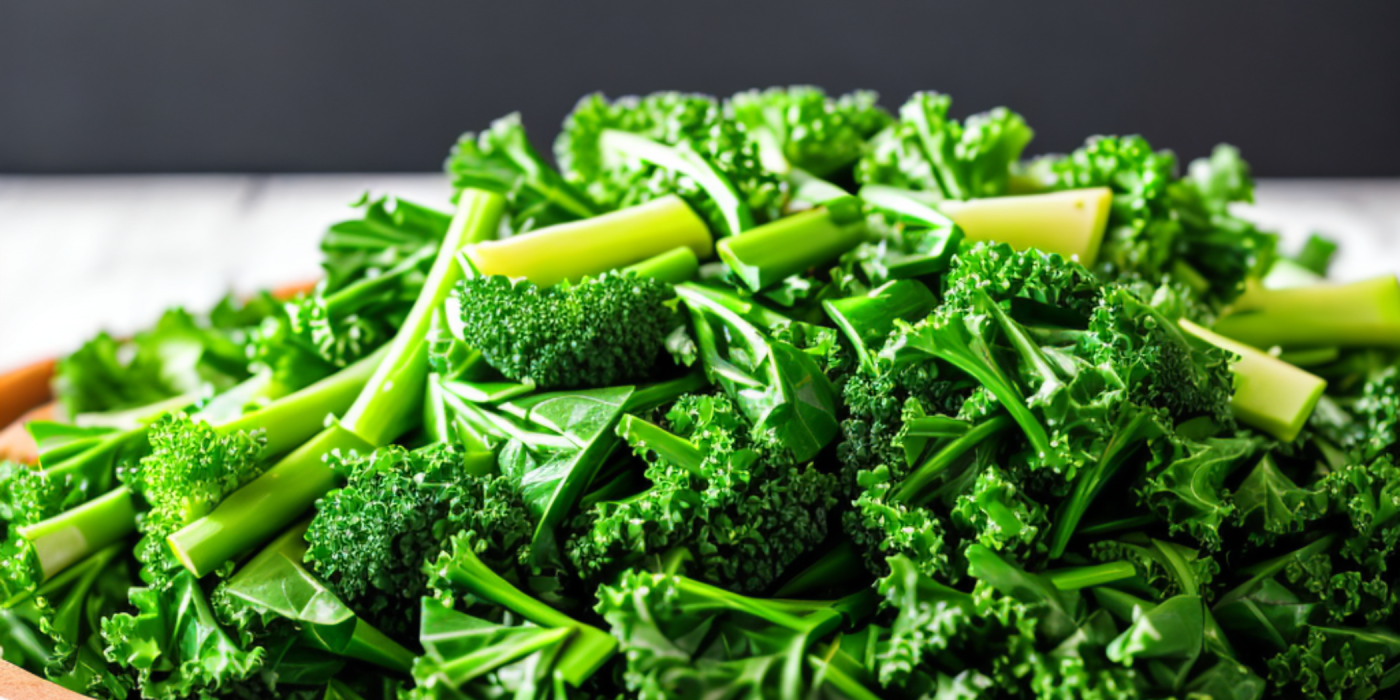The Volumetrics Diet: Discover the Power of Eating More and Weighing Less

In the quest for a sustainable approach to weight loss, we often find ourselves sifting through a myriad of diet plans. Today, we take a deep dive into the world of the Volumetrics Diet - a plan hailed for its unique approach to weight loss and promoting healthy eating habits.
Introducing the Volumetrics Diet
The Volumetrics Diet, founded by nutrition scientist Dr Barbara Rolls, stands out amongst other weight-loss plans. Instead of merely focusing on cutting calories or eliminating certain foods, it centres around the concept of energy density - the number of calories in a particular volume of food.
The beauty of the Volumetrics Diet lies in its guiding principle - 'eat more, weigh less'. Rather than leaving you feeling deprived, it encourages the consumption of larger quantities of lower-calorie, highly nutritious foods that leave you feeling satisfied while also promoting weight loss.
Navigating Through the Volumetrics Diet
This article aims to offer an in-depth guide to the Volumetrics Diet, shining a light on its methods, potential benefits, and challenges. Whether you're considering adopting the Volumetrics Diet or simply looking to broaden your knowledge on different dietary strategies, this guide promises to provide insightful knowledge and practical advice.
We'll delve into the science behind the diet, explore its four food categories, and provide an overview of what to eat on the Volumetrics Diet. Additionally, we will discuss the potential benefits of adopting this diet and the potential challenges or considerations that may come with it.
In embarking on any new diet or lifestyle change, having a thorough understanding of its principles and how it can fit into your unique lifestyle is essential. Let's delve into the world of the Volumetrics Diet together.
Understanding the Volumetrics Diet
As we delve into the principles of the Volumetrics Diet, it's crucial to appreciate its unique approach. Unlike many other diets, Volumetrics does not explicitly restrict any food types but focuses on altering the way you perceive and approach your food consumption.
Principles of the Volumetrics Diet
At the heart of the Volumetrics Diet is the concept of 'energy density' – the number of calories a certain volume of food provides. The diet is based on the premise that people tend to eat roughly the same volume of food each day, regardless of the calorie content. Therefore, by choosing foods with a low energy density (i.e., fewer calories per volume), you can eat the same volume of food while consuming fewer calories, leading to potential weight loss.
The Volumetrics Diet separates foods into four categories based on their energy density, from 'very low-density' (like non-starchy vegetables and broth-based soups) to 'very high-density' (such as sweets and fried foods). The diet encourages filling your plate mostly with lower-density foods, while still allowing room for small portions of higher-density items.
Emphasis on Low-Calorie, High-Volume Foods
The genius of the Volumetrics approach is that it recognises our desire for satiety. By prioritising low-calorie, high-volume foods, the diet aims to keep you feeling satisfied while still promoting weight loss. This contrasts with many diets that focus solely on calorie restriction, often leading to hunger and difficulty sticking to the plan. With Volumetrics, you can enjoy substantial, satisfying meals while working towards your weight loss goals.
The Science Behind the Volumetrics Diet
To truly appreciate the Volumetrics Diet and its unique approach, let's delve into the scientific principles that underpin this diet strategy. It's essential to grasp the research supporting the Volumetrics Diet and understand the key role of food density and volume in promoting feelings of fullness and facilitating weight loss.
Evidence Supporting the Volumetrics Diet
Numerous studies suggest that people tend to eat a consistent volume of food. This premise forms the foundation of the Volumetrics Diet, which encourages consumption of larger volumes of low-calorie foods to promote satiety, rather than reducing food quantity drastically.
Scientific research supports this principle. A study published in the American Journal of Clinical Nutrition found that when people eat low-density foods (i.e., foods with fewer calories per gram), they can consume fewer calories yet still feel satisfied. This research suggests that the Volumetrics Diet could indeed be an effective strategy for weight loss and long-term weight management.
The Role of Food Density and Volume
The Volumetrics Diet's primary focus is on the concept of energy density – the number of calories in a specific volume of food. Foods with lower energy density, such as fruits, vegetables, and whole grains, provide fewer calories for the same volume as high-energy-density foods like sweets and fats.
By choosing low-density foods that are higher in volume, the Volumetrics Diet aims to enhance feelings of fullness while reducing calorie intake, therefore promoting weight loss. This approach allows dieters to enjoy larger, more satisfying meals without overconsuming calories, making the Volumetrics Diet a potentially sustainable and satisfying approach to weight loss.
The Four Categories of the Volumetrics Diet
One of the key elements of the Volumetrics diet is its unique approach to categorising foods. The diet is centred around four categories, each designated based on energy density – that is, the number of calories per gram of food. Understanding these categories is instrumental in planning meals and snacks that align with the diet's principles.
Category One
Category One encompasses the lowest energy density foods, including non-starchy vegetables, non-fat dairy, and broth-based soups. These foods provide a sense of fullness while offering minimal calories. Incorporating a generous serving of these foods in every meal will ensure you stay satiated, whilst keeping calorie intake low.
Category Two
Foods in Category Two have a slightly higher energy density and include whole grains, lean proteins, legumes, and low-fat dairy. They offer vital nutrients and should be included in your meals for balanced nutrition, but remember to watch portion sizes due to the higher calorie content compared to Category One.
Category Three
Category Three comprises medium-energy density foods, such as bread, dessert, pizza, and fatty meats. While they're not off-limits, moderation is key. Enjoy these foods in smaller portions or less frequently to avoid exceeding your daily calorie intake.
Category Four
Lastly, Category Four contains the highest energy density foods, including chocolate, cookies, nuts, and butter. As they're calorie-dense, these foods should be eaten sparingly.
By understanding these categories and incorporating them into meal planning, you can enjoy a varied diet that promotes satiety and aids in weight management, fitting perfectly with the ethos of the Volumetrics diet.
What Can You Eat on the Volumetrics Diet?
When following the Volumetrics Diet, the focus is on consuming low-calorie, high-volume foods that keep you feeling satisfied while promoting weight loss. Let's explore the types of foods encouraged in the Volumetrics Diet and those that are recommended to be limited or avoided.
Encouraged Foods
The Volumetrics Diet encourages the consumption of nutrient-dense, low-calorie foods that are high in water content and fiber. These include:
- Fruits and vegetables: Fill your plate with a variety of colourful fruits and vegetables that are naturally low in calories and rich in vitamins, minerals, and antioxidants.
- Whole grains: Opt for whole grain options like whole wheat bread, brown rice, quinoa, and oats, which provide more fiber and nutrients compared to refined grains.
- Lean proteins: Include lean sources of protein such as skinless poultry, fish, legumes, and tofu. These foods offer satiety while being lower in calories and saturated fats.
- Low-fat dairy: Choose low-fat or fat-free dairy products like milk, yogurt, and cottage cheese to get calcium and protein without excessive calories.
- Soups and broth-based dishes: Incorporate broth-based soups and dishes into your meals, as they provide volume with fewer calories.
Foods to Limit or Avoid
While the Volumetrics Diet emphasizes healthier food choices, there are certain foods that should be limited or avoided due to their high calorie content or low nutrient density. These include:
- Processed snacks and sweets: Minimize the consumption of sugary treats, candies, cookies, and chips, as they tend to be high in calories and low in nutrients.
- Fried foods: Limit your intake of fried foods like french fries, fried chicken, and battered snacks, as they are calorie-dense and often contain unhealthy trans fats.
- High-fat and high-sugar foods: Reduce the consumption of foods high in saturated fats and added sugars, such as butter, full-fat dairy, sugary beverages, and desserts.
- Highly processed foods: Avoid heavily processed foods that are typically high in calories, sodium, and unhealthy additives. Opt for whole, minimally processed foods instead.
By focusing on consuming more of the encouraged foods and being mindful of the foods to limit or avoid, you can adhere to the Volumetrics Diet and promote weight loss while enjoying a satisfying and nutritious eating plan.
A Sample Volumetrics Diet Meal Plan
Embarking on the Volumetrics Diet can be made easier with a well-planned meal plan that aligns with its principles of prioritising low-calorie, high-volume foods. Here's an example of a day's worth of meals and snacks to give you an idea of how the Volumetrics Diet can be implemented in your daily routine.
Breakfast
- High-fibre oatmeal topped with fresh berries and a sprinkle of nuts
- A side of Greek yogurt with a drizzle of honey
- A cup of green tea or black coffee
Morning Snack
- Sliced cucumbers with a serving of hummus
Lunch
- Colourful salad with mixed greens, cherry tomatoes, cucumber, and bell peppers
- Grilled chicken breast or tofu as a protein source
- A dressing made with lemon juice and a dash of olive oil
- Whole grain pita bread on the side
Afternoon Snack
- A piece of fruit such as an apple or a pear
Dinner
- Grilled salmon or baked cod with a squeeze of lemon
- Steamed broccoli and cauliflower
- Quinoa pilaf with mixed vegetables
- A leafy green salad with a light vinaigrette dressing
Evening Snack
- Air-popped popcorn sprinkled with a pinch of sea salt
This sample meal plan showcases the Volumetrics Diet's emphasis on nutrient-rich, low-calorie foods that provide a sense of fullness and satisfaction. Feel free to customise the portion sizes and ingredients based on your preferences and dietary needs.
Remember, the Volumetrics Diet offers versatility, allowing you to adapt meals and snacks to suit your taste while still adhering to its principles of prioritising high-volume, low-calorie choices. Get creative with ingredient combinations, explore new recipes, and enjoy a variety of flavours while following the Volumetrics Diet.
The Potential Benefits of the Volumetrics Diet
The Volumetrics Diet offers a range of potential benefits that can positively impact your weight loss journey and overall well-being. Let's delve into the advantages of this innovative approach to eating.
Sustainable Weight Loss
One of the primary benefits of the Volumetrics Diet is its potential for sustainable weight loss. By focusing on consuming low-calorie, high-volume foods, the diet promotes a sense of fullness while reducing overall calorie intake. This can lead to gradual, steady weight loss, without the need for drastic restrictions or extreme dietary changes.
Enhanced Satiety
The Volumetrics Diet places importance on foods that are high in volume but low in calorie density, such as fruits, vegetables, and broth-based soups. These foods provide a greater sense of fullness and satisfaction, helping to curb cravings and prevent overeating. By incorporating these satiating choices into your meals, you may find it easier to adhere to the diet and maintain a calorie deficit.
Improved Nutrient Intake
Another advantage of the Volumetrics Diet is its emphasis on nutrient-rich foods. By prioritising fruits, vegetables, whole grains, and lean proteins, the diet ensures you receive a wide range of essential vitamins, minerals, and antioxidants. This can help improve overall nutrition and support optimal health.
Scientific Evidence
The potential benefits of the Volumetrics Diet are backed by scientific evidence. Numerous studies have demonstrated the positive effects of consuming low-calorie, high-volume foods on weight loss and satiety. Research has shown that individuals following the Volumetrics Diet tend to experience greater weight loss success compared to those on other traditional diets.
In conclusion, the Volumetrics Diet offers multiple advantages, including sustainable weight loss, enhanced satiety, and improved nutrient intake. Scientific research supports the effectiveness of this approach, making it a compelling option for individuals seeking a balanced and fulfilling way to manage their weight and overall health.
Potential Drawbacks and Considerations of the Volumetrics Diet
While the Volumetrics Diet offers numerous benefits, it's essential to explore potential challenges and considerations before embarking on this weight loss journey. Understanding these aspects can help you make an informed decision about whether the Volumetrics Diet aligns with your needs and preferences.
Challenges Associated with the Volumetrics Diet
The Volumetrics Diet encourages a focus on low-calorie, high-volume foods, which can be challenging for individuals accustomed to consuming calorie-dense foods. Adapting to this dietary approach may require adjusting your palate and exploring new recipes and food options. Additionally, portion control plays a vital role in the Volumetrics Diet, requiring mindfulness and self-discipline to ensure appropriate serving sizes.
Importance of Regular Exercise
While the Volumetrics Diet primarily focuses on food choices and portion sizes, it's important to note that incorporating regular physical activity into your lifestyle can further enhance the diet's effectiveness. Exercise supports weight loss, improves overall fitness, and contributes to better health outcomes. Therefore, coupling the Volumetrics Diet with an exercise routine can yield more comprehensive and sustainable results.
Consulting a Healthcare Professional
Before starting any new diet or weight loss plan, it is advisable to consult a healthcare professional, particularly if you have underlying health conditions or specific dietary requirements. They can provide personalised guidance and ensure that the Volumetrics Diet aligns with your individual needs and overall health goals. Additionally, individuals who are pregnant, breastfeeding, or have a history of disordered eating should seek professional advice before embarking on the Volumetrics Diet.
By considering these potential challenges, incorporating regular exercise, and seeking professional guidance, you can set yourself up for success when adopting the Volumetrics Diet as a strategy for weight loss and healthier living.
As we reach the conclusion of our comprehensive guide to the Volumetrics Diet, let's take a moment to recap the key elements we've explored and consider whether this approach aligns with your weight loss goals and lifestyle.
Recap of the Volumetrics Diet
Throughout this guide, we have delved into the principles of the Volumetrics Diet. By prioritising low-calorie, high-volume foods, this diet focuses on promoting satiety while maintaining a lower calorie intake. The emphasis on food density and volume allows you to enjoy satisfying portions while still working towards your weight loss goals.
We have also examined the four food categories that form the foundation of the Volumetrics Diet, providing you with a clear understanding of how to structure your meals and snacks. This approach allows for flexibility and variety, ensuring a sustainable and enjoyable eating plan.
Is the Volumetrics Diet Right for You?
When considering any diet, it is essential to evaluate its suitability for your individual needs and lifestyle. The Volumetrics Diet offers several potential benefits, including sustainable weight loss, enhanced satiety, and improved nutrient intake. By prioritising filling foods with lower calorie densities, it encourages mindful eating habits and can support long-term weight management.
However, it is crucial to consider potential drawbacks, such as the need for portion control and regular exercise to achieve optimal results. Consulting a healthcare professional before starting the Volumetrics Diet is advisable, particularly if you have any underlying health conditions or specific dietary requirements.
Ultimately, the decision to embark on the Volumetrics Diet rests with you. Consider the principles, benefits, and considerations we have discussed, and determine if it aligns with your weight loss goals and lifestyle aspirations.
Related to this article are the following:
I do hope you have enjoyed this article and hope that you will subscribe to my newsletter so you can get the latest information about all things naturally relaxing.
Stay in touch, join the Naturally Relaxing Newsletter
Newsletter Signup
Post Your Comments
or post as a guest
Be the first to comment.
Latest articles in Food

Hot Cross Buns This Easter: A Timeless Tradition of Baking and Sharing

Chocolate Krispie Cakes for Easter: A Simple, Festive Treat for All

2023 Christmas Culinary Delights: Recipes for the Ultimate Festive Feast

Embrace Autumn with the Best Pumpkin Spice Recipes in the UK

Turning Pumpkin Carvings into Pumpkin Pie: A British Culinary Tradition






